Welcome to lesson 4! In this lesson, we will learn about composition, which in my opinion, is the most important aspect of painting.
- Composition
- The Visual Elements
- Principles of Art
- Composition Techniques
- Simplification
- Rule of odds
- Rule of thirds
- Geometry and Symmetry
- Rules Exist To Be Broken
- General Composition Tips
- End Of Lesson 4
Composition
Composition is a very broad but important term in art. Art is not just about being able to accurately render a scene. It is the visual form of music and you are the composer.
Composition involves arranging the visual elements with the guidance of the principles of art to promote the artist’s statement. Unity is achieved when the artist’s statement is aligned with the composition.
A well-composed painting will intrigue and invite the viewer and help communicate the artist’s statement.
The Visual Elements
The visual elements are the building blocks in a painting and comprise of:
Line: The visual path that enables the eye to move within the piece.
Shape: Areas defined by edges within the piece, whether geometric or organic.
Color: The different hues.
Texture: Surface qualities that translate into tactile illusions.
Tone: Tone is essentially a color that is not a pure hue, white or black.
Space: The space taken up by (positive) or in between (negative) objects.
Depth: Perceived distance from the observer, segmented into the foreground, background, and optionally middle ground.
Principles of Art
The visual elements are arranged with consideration to a number of principles known as the principles of art (otherwise referred to as the principles of design or organization).
The principles of art are:
Rhythm: Creating a visual tempo through the use of repetitive elements.
Balance: The arrangement of elements to create a feeling of balance and stability in your painting.
Emphasis: The arrangement of elements to place emphasis on desired areas in your painting.
Gradation: A gradual change in a certain element to help connect the composition (long lines to short lines, large shapes to small shapes, dark to light tones, etc).
Harmony: Using similar elements throughout your painting to create a general sense of harmony.
Variety: Using different elements to create interest and contrast.
Movement: Creating a visual sense of movement in your painting through the placement of elements (for example, short, bold strokes in a painting would give the indication of movement and activity when used in contrast to long and muted strokes).
Proportion: The relative size of one element in comparison to another.
Composition Techniques
There are numerous approaches or composition techniques to achieving a sense of unity and harmony within an artwork, depending on the goals of the artist. For example, a work of art is said to be aesthetically pleasing to the eye if the elements within the work are arranged in a balanced way. However, there are artists such as Salvador Dalí whose sole aim is to disrupt traditional composition and challenge the viewer to rethink balance and design elements within artworks.
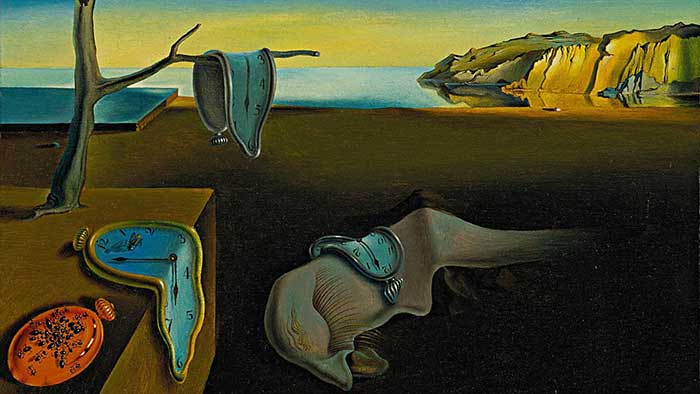
Simplification
Simplification is one of the most important skills you can learn as an artist. The master painter’s used simplification to reduce the clutter in their artworks and enhance the focal points.
You can simplify your composition in many ways, such as:
- Use a limited palette (color range)
- Reduce detail of unimportant areas
- Use a limited value range (the range between your darkest dark and lightest light)
- Use larger paint brushes to simplify the detail in your painting
- Remove unnecessary subjects from your painting
Simplification is most effective when combined with targeted complexity. This can be a powerful combination which you can use to really emphasize areas in your painting.
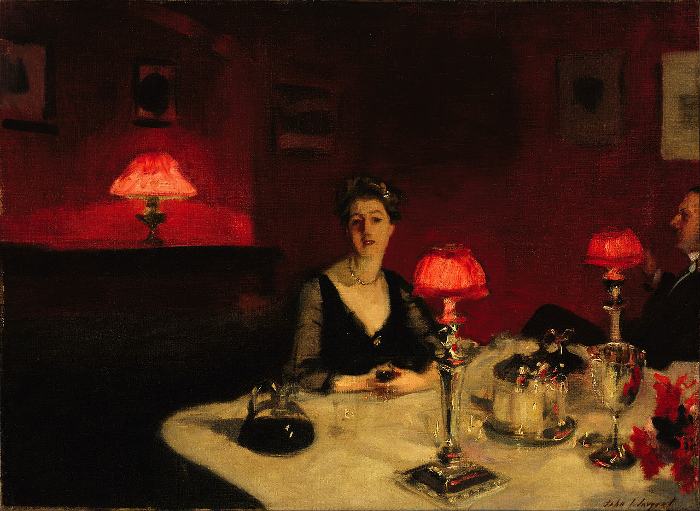
Above is a painting by John Singer Sargent. Let’s analyze this painting in terms of simplicity:
- The value range is very limited, outside of the relatively bright red lights. This really channels the viewer to those bright areas in the painting.
- The color range is also very limited, with John Sargent using mostly different tones of red and gray.
- The background has very little detail compared to the rest of the painting. This helps focus attention on the foreground, where there is much more activity.
- The brushwork is very loose and suggestive, which aligned with the generally dark lighting in the scene.
Rule of odds
The “rule of odds” suggests that an odd number of subjects in an image is more interesting than an even number. An even number of subjects produces symmetries in the image, which can appear overly formal and unnatural.
An image of a person surrounded/framed by two other persons, for instance, where the person in the center is the object of interest in that artwork, is more likely to be perceived as friendly and comforting by the viewer, than an image of a single person with no significant surroundings.

Rule of thirds
The rule of thirds is a technique used to ensure the focal point of your painting is not directly in the center and that your painting is not overly symmetrical. What it entails is cutting the scene into thirds both ways. You will end up with nine sections. The aim is to place your focal point at one of the intersections and to ensure none of your sections are the same. In general, a focal point which is directly in the center of the painting is not visually appealing for the viewer as it bisects the painting and appears unnatural.
The rule of thirds is thought to be a simplification of the golden mean. The golden mean is a ratio that has been used by visual artists for centuries as an aid to composition. When two things are in the proportion of 1:1.618 (approximately 3 to 5) they are said to be in the golden mean. I will not get into the detail of the golden mean and will just stick to the simplified rule of thirds.

Geometry and Symmetry
Related to the rule of odds is the observation that triangles are an aesthetically pleasing implied shape within an image. In a canonically attractive face, the mouth and eyes fall within the corners of the area of an equilateral triangle. Paul Cézanne successfully used triangles in most of his compositions of still-life scenes. A triangular format creates a sense of stability and strength.

Rules Exist To Be Broken
You will hear many ‘rules’ which are touted for creating an interesting composition. However, you should not consider these as rules you must strictly follow. Instead, you should think of these rules as rough guidelines or suggestions to aid your decision-making process.
For every ‘rule’ there are many brilliant paintings that have broken it.
General Composition Tips
- There should be a center of interest or focus in the work, to prevent it from becoming a pattern in itself;
- You should try to direct the viewer’s eye all around the painting. Try to avoid leading the viewer’s eye out of the picture immediately, with subjects facing out of the image;
- Exact bisections of the picture space should be avoided;
- Small, high contrast, elements have as much impact as larger, duller elements;
- The prominent subject should be off-center, unless a symmetrical or formal composition is desired;
- The horizon line should not divide the artwork in two equal parts but be positioned to emphasize either the sky or ground; showing more sky if the painting is of clouds, sunrise/set and more ground if a landscape; and
- In your work, no spaces between the objects should be the same. They should vary in shape and size. That creates a much more interesting image.
End Of Lesson 4
Awesome work! I hope you learned something new about composition.
In the next (and sadly final lesson), you will learn how to decide on what to paint and how to set up the perfect art studio.
Kind Regards

Dan Scott
Draw Paint Academy Previous Lesson Next Lesson


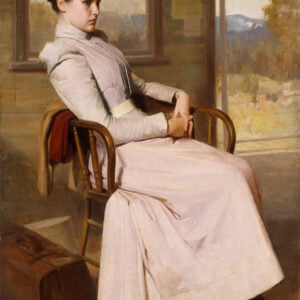

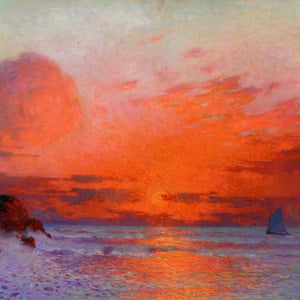
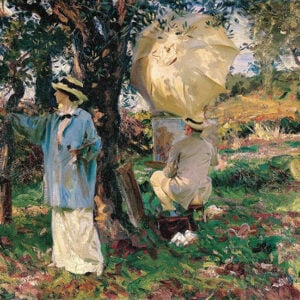

Learnt from the info you sent. . . thanks.
Very interesting and helpful information
I needed this lesson. Thanks for providing it.
Dear Dan’
thank-you for the lessons/
I enjoyed every one of them!
Waiting for the next lesson.
Chavi
No problem Chavi!
Dan
Thank You very interesting. I am a newbie from Costa Rica
Thank you for so graciously sharing all your knowledge on painting. So helpful.
My pleasure Diane!
Dan
very interesting and hardest part of an artwork ! I understand an artwork must be first pleasing to the eyes in terms of colors and composition.
Hi!,,,
My mom passed away,unexpectedly
She is an awesome artist.
I found some house paint,and old lumber and started painting.
Some actually not so bad.
Can’t wait for real art supplies.
Hopefully it will be somewhat easier to paint.
But kinda expensive.
Thanks for the lessons.
Another lesson I will be rereading. Interesting read. A lot to learn. Thank you.
This was a very good lesson. One I feel we all aspiring artists need. The art teachers that I have had in the past did not teach this. As a matter of fact, they taught very little. Thanks again for your time and teaching.
My pleasure Susan! Yes my art teachers did not mention any of this stuff either unfortunately.
Dan
This was very informative, thanks. I will be thinking carefully about my next painting. A couple of these rules i knew and work with. It was interesting to learn some more.
Thank you Dan for the lessons so far. They are extremely helpful and a good source of reference for me as a amateur painter. Jan.